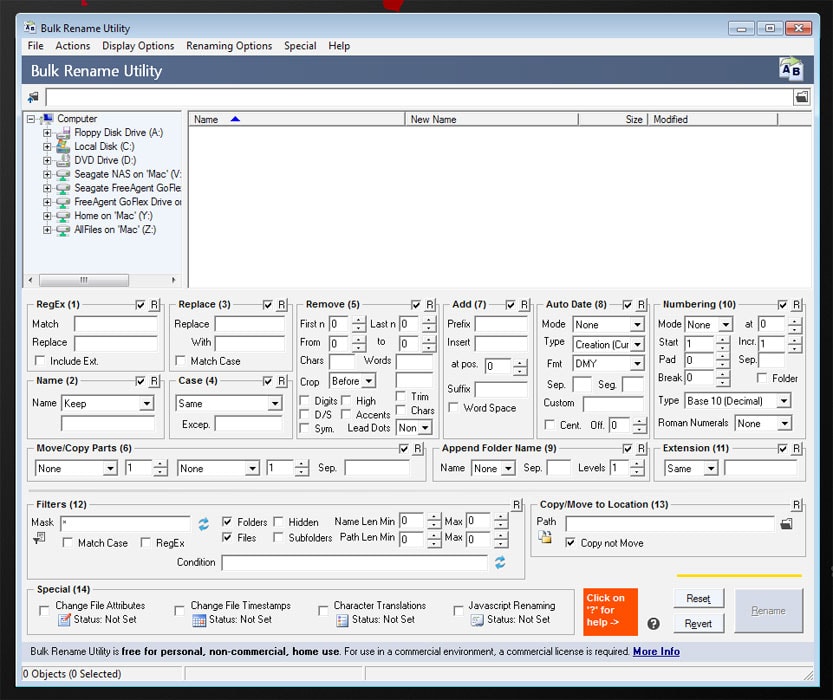

Otherwise, the logic you are using might affect directory names as well. If you are passing filenames with path components in them, you can use -d option to affect only filename portion. Report_v1.log not renamed: report_v2.log already exists You can override this behavior by using the -f option. If a renaming operation matches a filename that already exists, such a renaming won't go through by default. $ # replace all dot characters except the extension The difference is that the -v option shows the result after the files have been renamed. The -v option shows how the files have been renamed, similar to the -n option. $ rename 's/\d+/sprintf "%03d", $&/e' *.pngįor a more pleasing visual of the sanity check, pipe the output to column -ts, as shown below (assuming filenames don't have comma in them). $ # remove -n option after sanity check to actually rename the files $ # note that 100.png isn't part of the output, since it isn't affected The -n option allows you to do a sanity check without renaming the files. The below example formats the filenames to consistently have three digits, so that the sorted filename display works for the numbers as well. Delete the created files before moving on to the next illustration. See also F2: a cross-platform tool for batch renaming files and directories quickly and safely Basic example and sanity checkįor this chapter, use an empty folder to follow along the examples presented. See also: askubuntu: What's the difference between the different "rename" commands? usr/bin/rename using File::Rename version 1.10 Here's a couple of implementations on my system: $ rename -version If you don't have the command installed, check your distribution's repository or you can install it from metacpan: File::Rename. If no filenames are given on the command line,įilenames will be read via standard input.

If a givenįilename is not modified by the expression, it will not be Perl for at least some of the filenames specified. Perl expression which is expected to modify the $_ string in "rename" renames the filenames supplied according to the rule So, check man rename to see if you get the Perl based rename documentation as shown below: NAME There are several implementations for this particular command. This chapter will show a few examples for renaming files using the rename command.


 0 kommentar(er)
0 kommentar(er)
